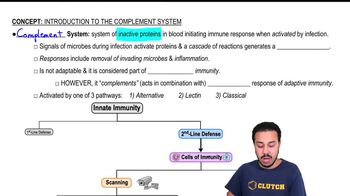Assume you stain Bacillus by applying malachite green with heat and then counterstain with safranin. Through the microscope, the green structures are
a. cell walls.
b. capsules.
c. endospores.
d. flagella.
e. impossible to identify.
 Verified step by step guidance
Verified step by step guidance



Assume you stain Bacillus by applying malachite green with heat and then counterstain with safranin. Through the microscope, the green structures are
a. cell walls.
b. capsules.
c. endospores.
d. flagella.
e. impossible to identify.
Which of the following is not a modification of a compound light microscope?
a. brightfield microscopy
b. darkfield microscopy
c. electron microscopy
d. phase-contrast microscopy
e. fluorescence microscopy
Which type of microscope would be best to use to observe each of the following?
a. a stained bacterial smear
b. unstained bacterial cells: the cells are small, and no detail is needed
c. unstained live tissue when it is desirable to see some intracellular detail
d. a sample that emits light when illuminated with ultraviolet light
e. intracellular detail of a cell that is 1μm long
f. unstained live cells in which intracellular structures are shown in color